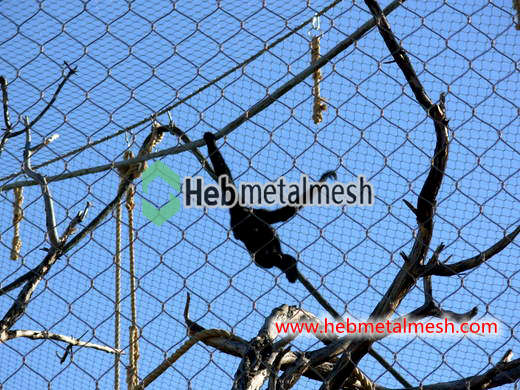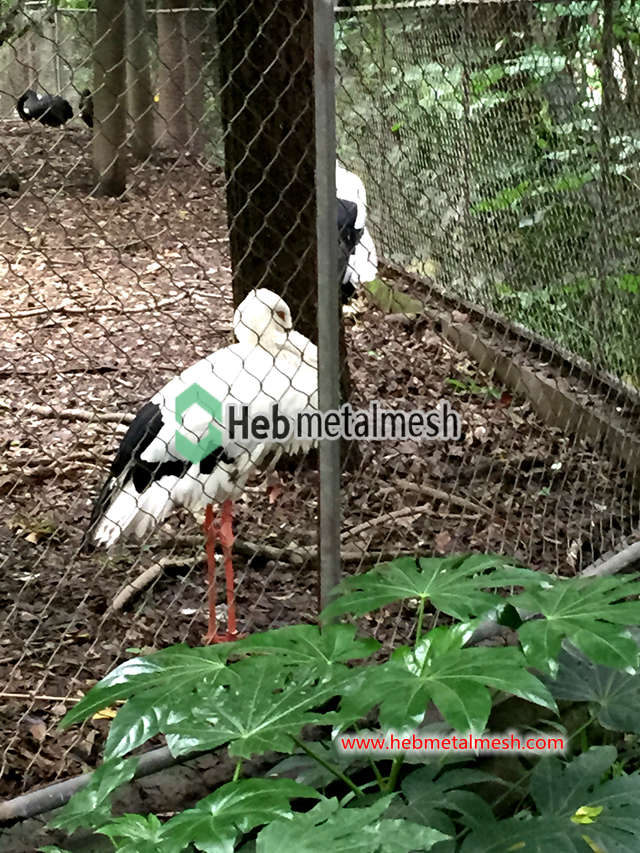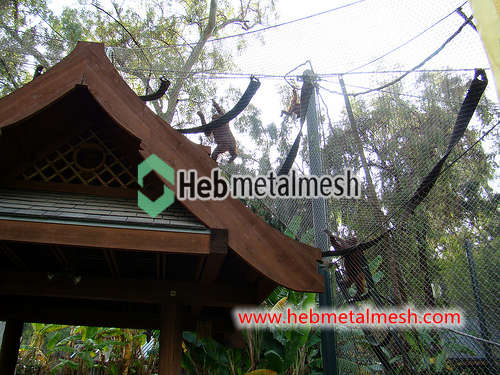Introduction
What is Animal Fence Netting?
So, you’re looking into animal fence netting? Good choice! This stuff is the backbone of any zoo enclosure. It’s not just about keeping your furry, feathered, or scaly friends in; it’s about protecting them, and your visitors, too. Animal fence netting is that sturdy, often woven or welded material you see surrounding exhibits. It’s designed to be a barrier, a fortress even, against escape artists and unwanted intruders. From the smallest enclosure to the largest safari park, animal fence netting is essential. Let’s dive into the different types available and how to choose the perfect one for your zoo.

Types of Animal Fence Netting
Chicken Wire
Let’s start with a classic: chicken wire. It’s been a go-to for animal enclosures for ages. This type of netting is made from thin, galvanized steel wires woven together to form a diamond-shaped mesh. It’s flexible, easy to handle, and relatively inexpensive. Chicken wire is perfect for smaller animals like birds, rabbits, and guinea pigs. It provides good visibility and allows for airflow. However, it’s not the strongest option and can be easily damaged by larger animals or sharp claws. So, while it’s a budget-friendly choice, it might not be the best fit for every situation.
Hardware Cloth
If you need something a bit tougher, hardware cloth is your next stop. This netting is made from thicker, galvanized steel wires welded together to form a rigid, square mesh. It’s significantly stronger than chicken wire and can withstand the pressure of larger animals like raccoons, foxes, and even some small dogs. Hardware cloth is ideal for protecting your precious plants from determined critters and creating secure enclosures for your more adventurous animals. But remember, it’s heavier and less flexible than chicken wire, so installation might require a little more effort.
Plastic Netting
Plastic netting offers a lighter, more flexible alternative to metal options. It’s typically made from high-density polyethylene and comes in various mesh sizes. Plastic netting is often used for temporary enclosures, poultry fencing, or as a barrier against birds and insects. It’s easy to install and relatively inexpensive. However, it’s not as durable as metal netting and can be susceptible to damage from sharp objects or strong winds.
Electric Fencing
Now, let’s talk about electric fencing. This isn’t your grandma’s picket fence. Electric fencing uses a low-voltage current to deter animals from crossing a boundary. It’s a popular choice for large enclosures and livestock because it’s often less expensive than traditional fencing. Plus, it’s highly effective at keeping animals in (or out) without the need for a physical barrier. However, it’s essential to consider the animal species you’re working with, as some might be more sensitive to electric shocks than others. And remember, safety is paramount. Always follow local regulations and guidelines when installing electric fencing.
Handwoven Stainless Steel Netting
If you’re looking for the ultimate in security and durability, handwoven stainless steel netting is worth considering. This type of netting is crafted by skilled artisans, creating a tightly woven, virtually impenetrable barrier. It’s resistant to corrosion, rust, and even the most determined escape artists. While it’s a premium option, the long-term benefits and increased security often outweigh the higher cost. Handwoven stainless steel netting is perfect for high-value animals, sensitive habitats, or areas with extreme weather conditions.

Choosing the Right Animal Fence Netting
Factors to Consider
Selecting the perfect animal fence netting is like choosing the right outfit – it depends on the occasion. In this case, the occasion is protecting your animals. Several factors come into play. First, consider the size and weight of your animals. A delicate bird requires a much finer mesh than a hefty bear. Next, think about the purpose of the fence. Are you keeping animals in or keeping predators out? This will influence the height, strength, and type of netting you need. Durability is key. Will the netting withstand harsh weather conditions, curious claws, or determined escape artists? Visibility is another factor. Some animals might be stressed by obscured views, while others might benefit from a little privacy. And let’s not forget cost. Netting comes in a wide price range, so it’s essential to balance your budget with your needs.
Ultimately, the best animal fence netting is the one that meets the specific requirements of your zoo. It’s often a good idea to consult with animal experts and fencing professionals to make an informed decision.
Installing Your Animal Fence Netting
Preparing the Fence
Alright, you’ve chosen the perfect netting for your zoo. Now, it’s time to get your hands dirty. The first step is to prep the area. Clear away any obstacles like rocks, branches, or old fencing. This will give you a clean slate to work with. Next, measure the perimeter of your enclosure accurately. You don’t want to run out of netting halfway through! Once you have your measurements, it’s time to install your fence posts. Make sure they’re sturdy and spaced correctly for the type of netting you’re using. Remember, proper installation is key to the longevity and effectiveness of your fence.
Attaching the Netting
With your posts in place, it’s time to start attaching the netting. There are a few different methods, depending on the type of netting and your preference. Stapling is a common choice for lighter netting, but it might not be strong enough for heavier materials. Clipping is another option, especially for plastic netting. And for maximum security, wiring can be used. When attaching the netting, make sure it’s taut and secure. Overlapping the netting slightly can help prevent animals from squeezing through. And don’t forget to bury the bottom of the fence a few inches to deter digging animals.
Additional Tips
A few extra tips can go a long way. Reinforcing corners with extra posts and wire can prevent sagging and damage. Consider adding an outward-facing top rail to deter climbers. And if you’re dealing with particularly determined escape artists, you might want to install an electric fence in addition to physical barriers. Remember, prevention is key, so regular inspections and maintenance are essential to keep your animal fence netting in top shape.
By following these steps and considering your animals’ specific needs, you can create a safe and secure enclosure that will protect your precious creatures for years to come.
Maintaining Your Animal Fence Netting
Netting Maintenance
Building a great fence is just the beginning. Maintaining it is equally important. Regular inspections are a must. Look for signs of wear and tear, like rust, holes, or loose wires. Repair any damage promptly to prevent bigger problems down the line. Cleaning your netting can also extend its life. Remove debris, dirt, and vegetation to keep it looking and functioning its best. And don’t forget about the ground around the fence. Clear away any tall grass or shrubs that could provide cover for unwanted visitors. A little extra effort now can save you headaches later.
Remember, a well-maintained fence is not only safer for your animals but also more effective at keeping intruders out.
Common Questions About Animal Fence Netting
Got questions? We’ve got answers! Here are some common queries about animal fence netting:
Deer are notorious jumpers and browsers. A tall, sturdy fence made from handwoven stainless steel netting or welded wire mesh is often the best option. Adding an electric fence can also deter them.
Burying the bottom of your fence at least six inches deep is a good start. You can also add a layer of hardware cloth along the bottom for extra protection.
Yes, electric fencing can be effective for deterring predators from chicken coops. However, it’s essential to choose the right voltage and ensure the netting is safe for your birds.
The lifespan of your fence netting depends on the material, climate, and maintenance. Stainless steel netting is the most durable, while plastic netting might have a shorter lifespan.
The cost of fence netting varies depending on the type, size, and quantity you need. Chicken wire is generally the most affordable, while handwoven stainless steel netting is the priciest.
Remember, these are just a few common questions. If you have more specific concerns, don’t hesitate to reach out to a fencing expert.
Conclusion
Choosing the right animal fence netting can be overwhelming, but armed with the right information, you can create a secure and suitable environment for your animals. Remember, every zoo is unique, so experiment with different types of netting to find the perfect solution. With proper installation and maintenance, your animal fence netting will be a cornerstone of your zoo’s success.
Call to Action
Share your animal fence netting experiences! What works best for you? Let us know in the comments below. We love hearing from fellow zookeepers and animal enthusiasts.



